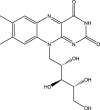Arts, cultural heritage, sciences, and micro-/bio-/technology: Impact of biomaterials and biocolorants from antiquity till today!
- PMID: 39656876
- PMCID: PMC11664188
- DOI: 10.1093/jimb/kuae049
Arts, cultural heritage, sciences, and micro-/bio-/technology: Impact of biomaterials and biocolorants from antiquity till today!
Abstract
Nature has inspired and provided humans with ideas, concepts, and thoughts on design, art, and performance for millennia. From early societies when humankind often took shelter in caves, until today, many materials and colorants to express feelings or communicate with one another were derived from plants, animals, or microbes. In this manuscript, an overview of these natural products used in the creation of art is given, from paintings on rocks to fashionable dresses made from bacterial cellulose. Besides offering many examples of art works, the origin and application of various biomaterials and colorants are discussed. While many facets of our daily lives have changed over millennia, one certainty has been that humans have an intrinsic need to conceptualize and create to express themselves. Driven by technological advances in the past decades and in the light of global warming, new and often more sustainable materials and colorants have been discovered and implemented. The impact of art on human societies remains relevant and powerful.
One-sentence summary: This manuscript discusses the use of biomaterials and biocolorants in art from a historical perspective, spanning 37,000 bc until today.
Keywords: Art; Biocolorants; Biomaterials; Natural Products.
© The Author(s) 2024. Published by Oxford University Press on behalf of Society of Industrial Microbiology and Biotechnology.
Conflict of interest statement
The authors declare no conflict of interest.
Figures

















Similar articles
-
Skin Disease as Art.JAMA Dermatol. 2017 May 1;153(5):448. doi: 10.1001/jamadermatol.2017.0967. JAMA Dermatol. 2017. PMID: 28492841 No abstract available.
-
The human figure in modern painting.Caduceus. 1985 Summer;1(2):1-50. Caduceus. 1985. PMID: 3916572 No abstract available.
-
[Art and medicine, history of an encounter].Soins Pediatr Pueric. 2010 Jul-Aug;(255):16-9. Soins Pediatr Pueric. 2010. PMID: 20684387 French.
-
Ideas about pain, a historical view.Nat Rev Neurosci. 2007 Jan;8(1):71-80. doi: 10.1038/nrn2042. Nat Rev Neurosci. 2007. PMID: 17180164 Review.
-
From Oedipus to PACE, using the concepts of shame and guilt as golden thread.Australas Psychiatry. 2016 Feb;24(1):81-3. doi: 10.1177/1039856215609759. Epub 2015 Oct 20. Australas Psychiatry. 2016. PMID: 26487323 Review.
References
-
- Albermann C., Beuttler H. (2016). Synthesis of beta-carotene and other important carotenoids with bacteria. In E. J. Vandamme, J. L. Revuelta (Eds.), Industrial biotechnology of vitamins, biopigments and antioxidants(p. 548). Wiley-VCH Verlag GmbH.
-
- An S. Y., Min S. K., Cha I. H., Choi Y. L., Cho Y. S., Kim C. H., Lee Y. C. (2002). Decolorization of triphenylmethane and azo dyes by Citrobacter sp. Biotechnol Letters, 24, 1037–1040. 10.1023/A:1015610018103 - DOI
-
- Antipova T. V., Zhelifonova V. P., Zaitsuv K. V., Vainshtein M. B. (2023). Fungal azaphilone pigments as promising natural colorants. Microbiology (Reading, England), 92, 1–10. 10.1134/S0026261722601737 - DOI
-
- Avcioglu N. H., Birbe M., Bilkay I. S. (2021). Optimization and physicochemical characterization of enhanced microbial cellulose production with a new Kombucha consortium. Process Biochemistry, 108, 60–68. 10.1016/j.procbio.2021.06.005 - DOI
Publication types
MeSH terms
Substances
LinkOut - more resources
Full Text Sources
Miscellaneous

